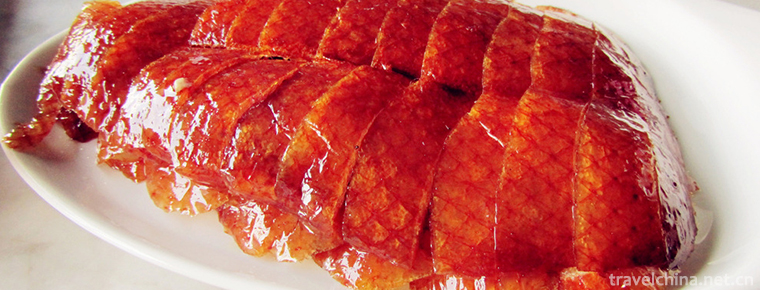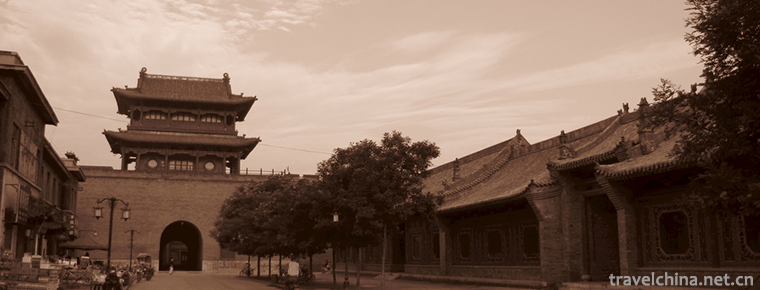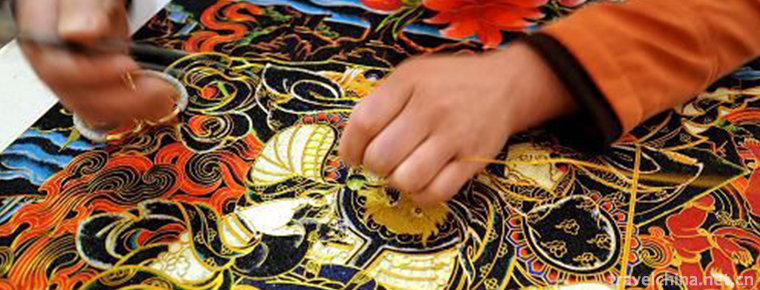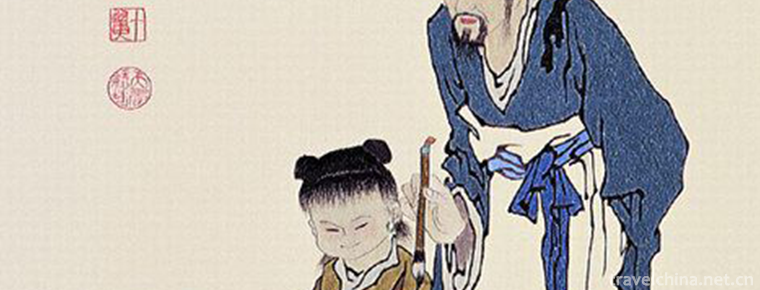Cantonese crispy fried pork
Crispy fried pork is a traditional dish with color, aroma and taste. It belongs to Guangdong cuisine department. This dish is one of the classic Cantonese cured wax. The crisp-skinned roast meat is characterized by its fleshy, fragrant and crisp taste. It is called Yiju. A piece of meat can taste three kinds of taste. First, it will feel the crispness of skin, secondly, it will feel the softness of fat, and finally, it will feel the sweetness of lean meat.
One piece of pork (about 300 grams), 10 grams of salt, 10 grams of spiced powder, 10 ml of soy sauce, 8 grams of sugar, 5 grams of baking soda, 1 onion, 3 pieces of ginger, 3-4 bamboo sticks and one tin paper.
1. Wash the pork and cook it in a cool water pan. Add onions and ginger and cook it slowly until the meat discolors. Put chopsticks together without spilling blood and water. The meat is about 7 years old.
2. When the meat is cooked, remove the cold water immediately. After a little cooling, use the towel to dry the water.
3. Put some holes in the skin with bamboo sticks, the finer the hole is, the better. Then scrape the white film and impurities on the skin with a knife.
4, sprinkle a small amount of salt on the skin (about 3 grams) and apply baking soda.
5. Turn the pork over, cut a few knives at the side of lean meat to taste evenly. Then pour the remaining salt, sugar, spices and soy sauce into a bowl. The lean meat portion is salted down in the seasoning for 1-2 hours.
6. Remove the cured pork, drain the excess juice, cross-string it with bamboo sticks to prevent deformation, and then wrap the meat around tightly with tin paper, leaving only the skin exposed outside.
7. Keep the oven's heat at 250 degrees (or the highest temperature) for about 30 minutes, or remove the black coke from the skin until it starts to turn yellow and coke. Scrape the black coke with a knife.
8. Spread a layer of edible oil on the scraped meat skin surface and continue to put it in the oven. Bake it for 10 minutes with 200 degrees of fire, or see the oil on the meat skin surface.
9. Finally, slice the roast meat after slightly cooling. The skin can be eaten with sugar, and the lean meat can be eaten with soy sauce.










-
About Us
If you are interested in Chinese culture, Beautiful Scenery and Delicious Food, Welcome to China..
Views: 360 Time 2018-09-28 -
Pingyao Ancient City Scenic Spot
Pingyao Ancient City is located in Pingyao County, central Shanxi Province. It was founded in Xuanwang Period of Western Zhou Dynasty (827-782 BC)..
Views: 144 Time 2019-02-07 -
Saint Sophia Cathedral in Harbin
St. Sophia Church is located in Sophia Square, Daoli District, Harbin City, Heilongjiang Province, China. It is a Byzantine-style Orthodox Church built in 1907.
Views: 170 Time 2019-02-08 -
Ancient town of Tangqi
Tangqi Town, located in the northern part of Hangzhou City, borders Deqing County of Huzhou City, is about 20 kilometers away from the city centre and 13 kilometers away from Linping.
Views: 236 Time 2019-02-13 -
Weaving Techniques of Tibetan Bangdan and Kapa
The woolen apron commonly used by Tibetan people is called "Bangdian" in Tibetan, which has the functions of decoration and cold resistance. Jiedexiu Town, Gongga County, Shannan District, T.
Views: 162 Time 2019-04-05 -
Gu embroidery
Gu embroidery, a traditional folk art in Shanghai, is one of the national intangible cultural heritages..
Views: 139 Time 2019-05-01 -
Red boxing
Red boxing originated in Zhou and Qin Dynasties, became famous in Tang and Song Dynasties and prevailed in Ming and Qing Dynasties. It is an important link.
Views: 179 Time 2019-05-03 -
Li nationality firewood dance
The firewood dance is one of the representative folk dances of the Li nationality. It is called "Turn Brake" and "Taisha" in the Li dialect. It originated from the funeral custom o.
Views: 214 Time 2019-05-12 -
Lishui Shipmans Chant
Lishui Shipman's Chant is a unique work chant transformed from local minor. It is a kind of traditional folk music with strong rhythm, which reflects the hard life of the shipmen and the work scene in.
Views: 127 Time 2019-05-13 -
Ming opera style
On May 20, 2006, Yiyang Opera was approved by the State Council of the People's Republic of China to be listed in the first batch of national intangible cultural heritage, numbered IV-5..
Views: 164 Time 2019-07-13 -
Liubeichi Park
Liubeichi park is located at No.4 Minjiang East Road, Yibin City, with an area of 238.18 mu. It is a national AAAA tourist attraction. It is a famous scenic spot and a key Park in Sichuan Province..
Views: 150 Time 2020-10-16 -
Dagu Glacier
Dagu iceberg scenic area is located in Heishui County, Aba Tibetan and Qiang Autonomous Prefecture, Sichuan Province, China, 102.44.15-102.52.46 E and 32.12.30-32.17.06 n, which is a rare modern mountain glacier. .
Views: 348 Time 2020-11-07










